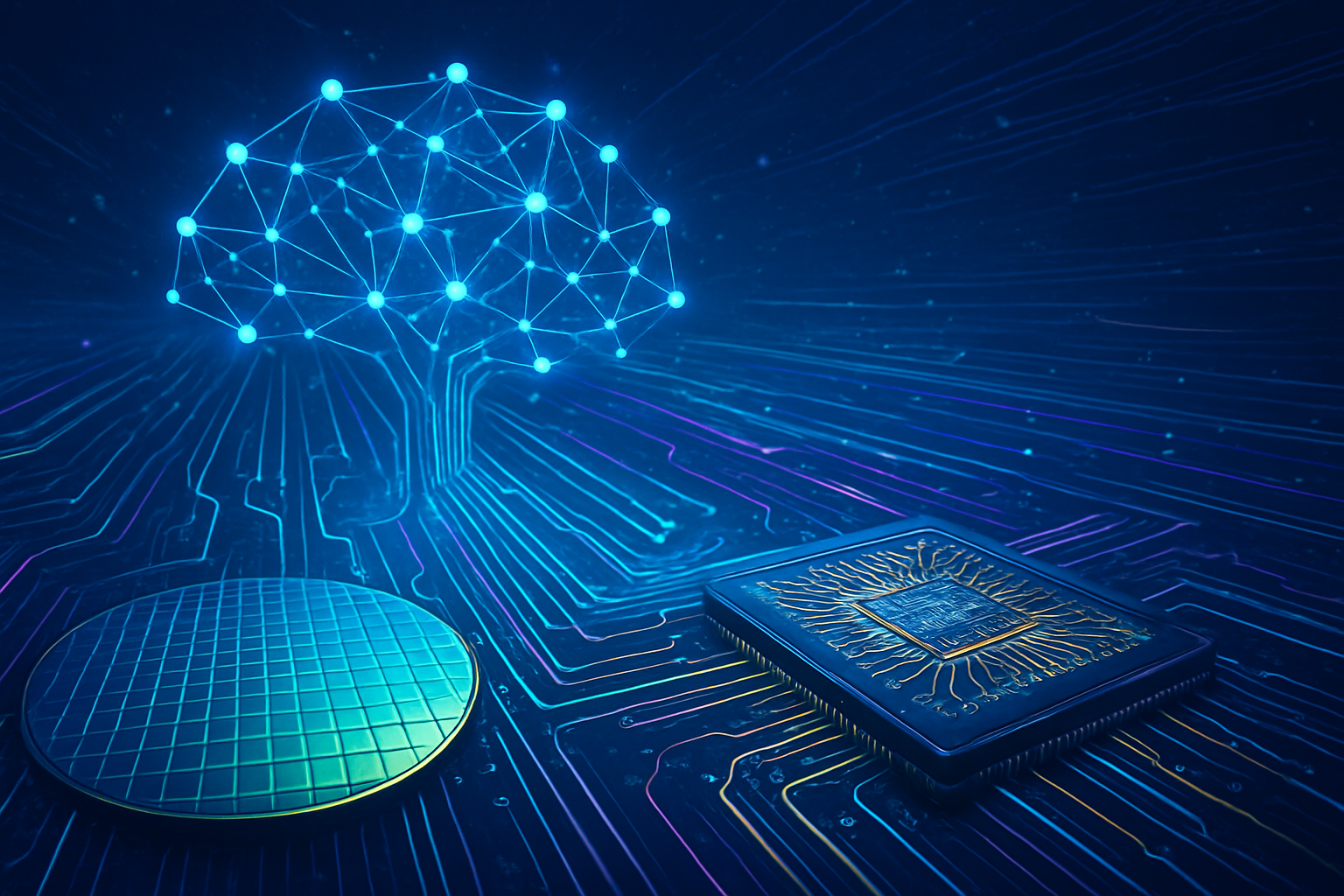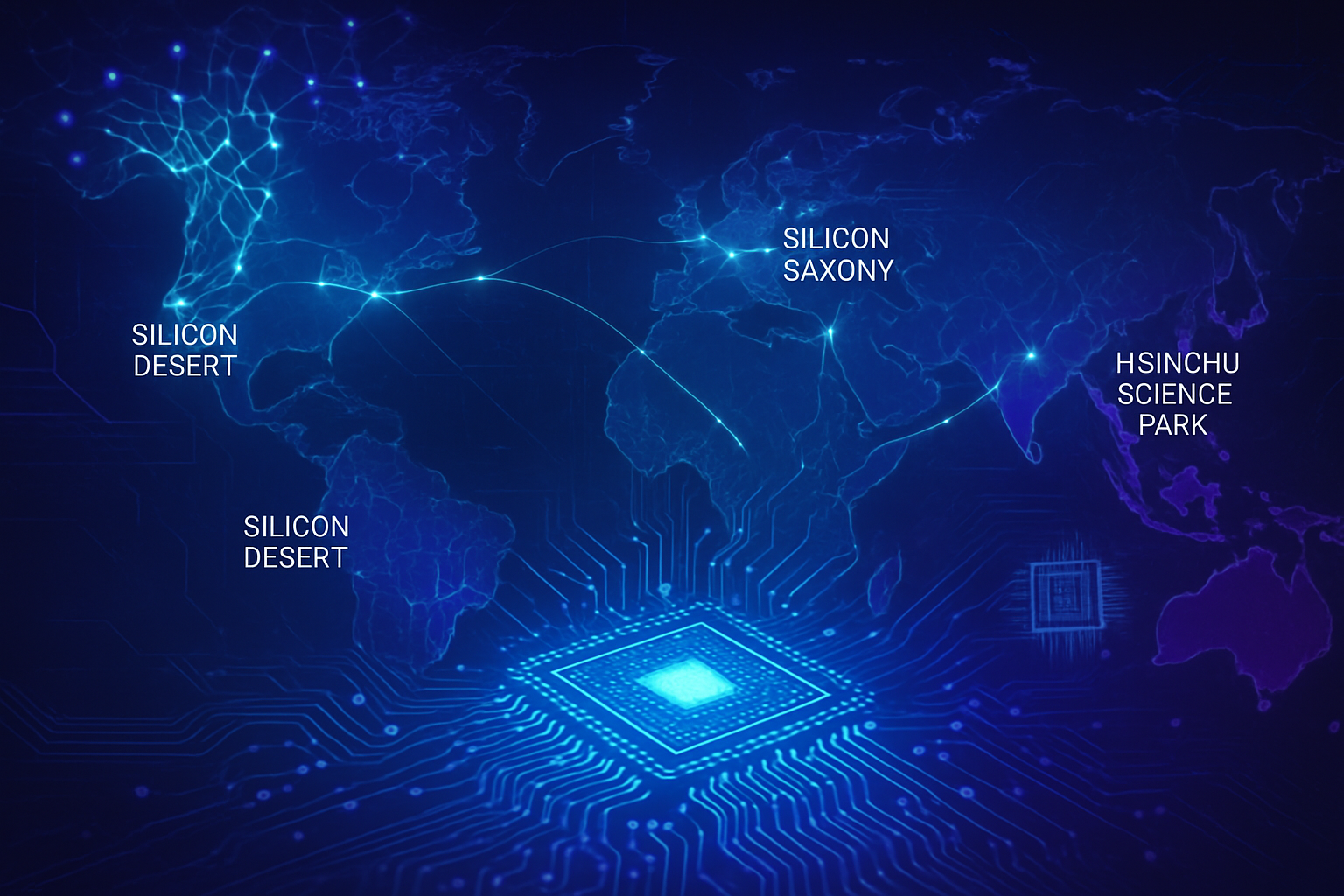The landscape of artificial intelligence is undergoing a profound transformation, driven by an unprecedented surge in semiconductor innovation. Far from incremental improvements, the industry is witnessing a Cambrian explosion of breakthroughs in chip design, manufacturing, and materials science, directly enabling the development of more powerful, efficient, and versatile AI systems. These advancements are not merely enhancing existing AI capabilities but are fundamentally reshaping the trajectory of artificial intelligence, promising a future where AI is more intelligent, ubiquitous, and sustainable.
At the heart of this revolution are innovations that dramatically improve performance, energy efficiency, and miniaturization, while simultaneously accelerating the development cycles for AI hardware. From vertically stacked chiplets to atomic-scale lithography and brain-inspired computing architectures, these technological leaps are addressing the insatiable computational demands of modern AI, particularly the training and inference of increasingly complex models like large language models (LLMs). The immediate significance is a rapid expansion of what AI can achieve, pushing the boundaries of machine learning and intelligent automation across every sector.
Unpacking the Technical Marvels Driving AI's Evolution
The current wave of AI semiconductor innovation is characterized by several key technical advancements, each contributing significantly to the enhanced capabilities of AI hardware. These breakthroughs represent a departure from traditional planar scaling, embracing new dimensions and materials to overcome physical limitations.
One of the most impactful areas is advanced packaging technologies, which are crucial as conventional two-dimensional scaling approaches reach their limits. Techniques like 2.5D and 3D stacking, along with heterogeneous integration, involve vertically stacking multiple chips or "chiplets" within a single package. This dramatically increases component density and shortens interconnect paths, leading to substantial performance gains (up to 50% improvement in performance per watt for AI accelerators) and reduced latency. Companies like Taiwan Semiconductor Manufacturing Company (TSMC: TPE), Samsung Electronics (SSNLF: KRX), Advanced Micro Devices (AMD: NASDAQ), and Intel Corporation (INTC: NASDAQ) are at the forefront, utilizing platforms such as CoWoS, SoIC, SAINT, and Foveros. High Bandwidth Memory (HBM), often vertically stacked and integrated close to the GPU, is another critical component, addressing the "memory wall" by providing the massive data transfer speeds and lower power consumption essential for training large AI models.
Advanced lithography continues to push the boundaries of miniaturization. The emergence of High Numerical Aperture (High-NA) Extreme Ultraviolet (EUV) lithography is a game-changer, offering higher resolution (8 nm compared to current EUV's 0.33 NA). This enables transistors that are 1.7 times smaller and nearly triples transistor density, paving the way for advanced nodes like 2nm and below. These smaller, more energy-efficient transistors are vital for developing next-generation AI chips. Furthermore, Multicolumn Electron Beam Lithography (MEBL) increases interconnect pitch density, significantly reducing data path length and energy consumption for chip-to-chip communication, a critical factor for high-performance computing (HPC) and AI applications.
Beyond silicon, research into new materials and architectures is accelerating. Neuromorphic computing, inspired by the human brain, utilizes spiking neural networks (SNNs) for highly energy-efficient processing. Intel's Loihi and IBM's TrueNorth and NorthPole are pioneering examples, promising dramatic reductions in power consumption for AI, making it more sustainable for edge devices. Additionally, 2D materials like graphene and carbon nanotubes (CNTs) offer superior flexibility, conductivity, and energy efficiency, potentially surpassing silicon. CNT-based Tensor Processing Units (TPUs), for instance, have shown efficiency improvements of up to 1,700 times compared to silicon TPUs for certain tasks, opening doors for highly compact and efficient monolithic 3D integrations. Initial reactions from the AI research community and industry experts highlight the revolutionary potential of these advancements, noting their capability to fundamentally alter the performance and power consumption profiles of AI hardware.
Corporate Impact and Competitive Realignments
These semiconductor innovations are creating significant ripples across the AI industry, benefiting established tech giants and fueling the growth of innovative startups, while also disrupting existing market dynamics.
Companies like TSMC and Samsung Electronics (SSNLF: KRX) are poised to be major beneficiaries, as their leadership in advanced packaging and lithography positions them as indispensable partners for virtually every AI chip designer. Their cutting-edge fabrication capabilities are the bedrock upon which next-generation AI accelerators are built. NVIDIA Corporation (NVDA: NASDAQ), a dominant force in AI GPUs, continues to leverage these advancements in its architectures like Blackwell and Rubin, maintaining its competitive edge by delivering increasingly powerful and efficient AI compute platforms. Intel Corporation (INTC: NASDAQ), through its Foveros packaging and investments in neuromorphic computing (Loihi), is aggressively working to regain market share in the AI accelerator space. Similarly, Advanced Micro Devices (AMD: NASDAQ) is making significant strides with its 3D V-Cache technology and MI series accelerators, challenging NVIDIA's dominance.
The competitive implications are profound. Major AI labs and tech companies are in a race to secure access to the most advanced fabrication technologies and integrate these innovations into their custom AI chips. Google (GOOGL: NASDAQ), with its Tensor Processing Units (TPUs), continues to push the envelope in specialized AI ASICs, directly benefiting from advanced packaging and smaller process nodes. Qualcomm Technologies (QCOM: NASDAQ) is leveraging these advancements to deliver powerful and efficient AI processing capabilities for edge devices and mobile platforms, enabling a new generation of on-device AI. This intense competition is driving further innovation, as companies strive to differentiate their offerings through superior hardware performance and energy efficiency.
Potential disruption to existing products and services is inevitable. As AI hardware becomes more powerful and energy-efficient, it enables the deployment of complex AI models in new form factors and environments, from autonomous vehicles to smart infrastructure. This could disrupt traditional cloud-centric AI paradigms by facilitating more robust edge AI, reducing latency, and enhancing data privacy. Companies that can effectively integrate these semiconductor innovations into their AI product strategies will gain significant market positioning and strategic advantages, while those that lag risk falling behind in the rapidly evolving AI landscape.
Broader Significance and Future Horizons
The implications of these semiconductor breakthroughs extend far beyond mere performance metrics, shaping the broader AI landscape, raising new concerns, and setting the stage for future technological milestones. These innovations are not just about making AI faster; they are about making it more accessible, sustainable, and capable of tackling increasingly complex real-world problems.
These advancements fit into the broader AI landscape by enabling the scaling of ever-larger and more sophisticated AI models, particularly in generative AI. The ability to process vast datasets and execute intricate neural network operations with greater speed and efficiency is directly contributing to the rapid progress seen in areas like natural language processing and computer vision. Furthermore, the focus on energy efficiency, through innovations like neuromorphic computing and wide bandgap semiconductors (SiC, GaN) for power delivery, addresses growing concerns about the environmental impact of large-scale AI deployments, aligning with global sustainability trends. The pervasive application of AI within semiconductor design and manufacturing itself, via AI-powered Electronic Design Automation (EDA) tools like Synopsys' (SNPS: NASDAQ) DSO.ai, creates a virtuous cycle, accelerating the development of even better AI chips.
Potential concerns include the escalating cost of developing and manufacturing these cutting-edge chips, which could further concentrate power among a few large semiconductor companies and nations. Supply chain vulnerabilities, as highlighted by recent global events, also remain a significant challenge. However, the benefits are substantial: these innovations are fostering the development of entirely new AI applications, from real-time personalized medicine to highly autonomous systems. Comparing this to previous AI milestones, such as the initial breakthroughs in deep learning, the current hardware revolution represents a foundational shift that promises to accelerate the pace of AI progress exponentially, enabling capabilities that were once considered science fiction.
Charting the Course: Expected Developments and Expert Predictions
Looking ahead, the trajectory of AI-focused semiconductor production points towards continued rapid innovation, with significant developments expected in both the near and long term. These advancements will unlock new applications and address existing challenges, further embedding AI into the fabric of daily life and industry.
In the near term, we can expect the widespread adoption of current advanced packaging technologies, with further refinements in 3D stacking and heterogeneous integration. The transition to smaller process nodes (e.g., 2nm and beyond) enabled by High-NA EUV will become more mainstream, leading to even more powerful and energy-efficient specialized AI chips (ASICs) and GPUs. The integration of AI into every stage of the chip lifecycle, from design to manufacturing optimization, will become standard practice, drastically reducing design cycles and improving yields. Experts predict a continued exponential growth in AI compute capabilities, driven by this hardware-software co-design paradigm, leading to more sophisticated and nuanced AI models.
Longer term, the field of neuromorphic computing is anticipated to mature significantly, potentially leading to a new class of ultra-low-power AI processors capable of on-device learning and adaptive intelligence, profoundly impacting edge AI and IoT. Breakthroughs in novel materials like 2D materials and carbon nanotubes could lead to entirely new chip architectures that surpass the limitations of silicon, offering unprecedented performance and efficiency. Potential applications on the horizon include highly personalized and predictive AI assistants, fully autonomous robotics, and AI systems capable of scientific discovery and complex problem-solving at scales currently unimaginable. However, challenges remain, including the high cost of advanced manufacturing equipment, the complexity of integrating diverse materials, and the need for new software paradigms to fully leverage these novel hardware architectures. Experts predict that the next decade will see AI hardware become increasingly specialized and ubiquitous, moving AI from the cloud to every conceivable device and environment.
A New Era for Artificial Intelligence: The Hardware Foundation
The current wave of innovation in AI-focused semiconductor production marks a pivotal moment in the history of artificial intelligence. It underscores a fundamental truth: the advancement of AI is inextricably linked to the capabilities of its underlying hardware. The convergence of advanced packaging, cutting-edge lithography, novel materials, and AI-driven design automation is creating a foundational shift, enabling AI to transcend previous limitations and unlock unprecedented potential.
The key takeaway is that these hardware breakthroughs are not just evolutionary; they are revolutionary. They are providing the necessary computational horsepower and energy efficiency to train and deploy increasingly complex AI models, from the largest generative AI systems to the smallest edge devices. This development's significance in AI history cannot be overstated; it represents a new era where hardware innovation is directly fueling the rapid acceleration of AI capabilities, making more intelligent, adaptive, and pervasive AI a tangible reality.
In the coming weeks and months, industry observers should watch for further announcements regarding next-generation chip architectures, particularly from major players like NVIDIA (NVDA: NASDAQ), Intel (INTC: NASDAQ), and AMD (AMD: NASDAQ). Keep an eye on the progress of High-NA EUV deployment and the commercialization of novel materials and neuromorphic computing solutions. The ongoing race to deliver more powerful and efficient AI hardware will continue to drive innovation, setting the stage for the next wave of AI applications and fundamentally reshaping our technological landscape.
This content is intended for informational purposes only and represents analysis of current AI developments.
TokenRing AI delivers enterprise-grade solutions for multi-agent AI workflow orchestration, AI-powered development tools, and seamless remote collaboration platforms.
For more information, visit https://www.tokenring.ai/.





